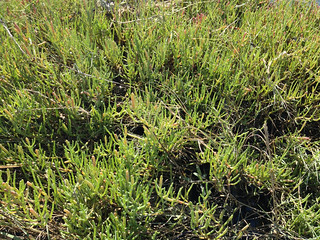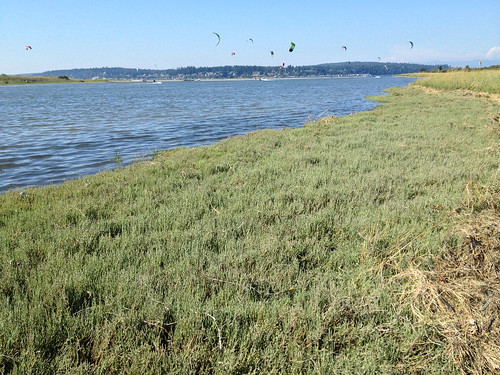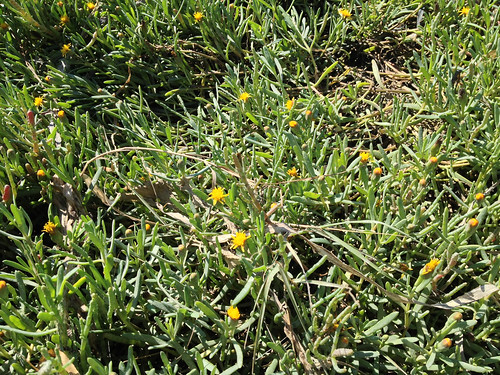
I am a big fan of MasterChef UK. Watching it from across the pond (Northwest US, to be precise), so it is interesting to see different recipes, cooking techniques, and even plants… Speaking of plants, I got curious about samphire after watching so many British chefs using it. However, I never saw it in American grocery stores or farm markets. After googling it (this plant is known as salicornia, but also has many common names: sea beans, beach asparagus, samphire, glasswort, pickleweed, etc…), it looked like some farmers in the Northeast US may grow it, but it is not as popular in US as it is in UK. What a pity that I could not satisfy my curious tastebuds.
Some time in June I shopped at Pike Market in Seattle and, to my great surprise, spotted a plant that resembled samphire. It sat on a merchant’s display without any name or price tag, so I just grabbed it. The store owner called it sea beans. I proudly brought my catch of the day home and tasted it for the first time. It was surprisingly salty: even though I read before that it was supposed to be so, I was not prepared for such a strong saltiness. It was pleasantly crisp too. After first salty shock has passed, I honestly liked it.

Salicornia plants can be eaten either cooked or raw. Usually, it gets steamed, however, remember that it is already salty, so there is no need to add salt, and then sprinkled with olive oil. With raw variety, we used it in a salad, and it came out pretty tasty.
Later in the summer, on one hot sunny day we went to a small island in a bid to cool down. After some adventures we ended up walking along a small lagoon. Sandy beach gave way to some greenery, and it took a while to realize that this abundant vegetation was none other than my beloved sea beans. There was a sea of sea beans. I little bit further we even found a poster describing local flora and fauna, and; indeed, it mentioned pickleweed (aka sea beans). Here, it is in all it’s glory:

In some places pickleweed got mixed with another plant that looked fairly similar, but had yellow flowers. It’s called fleshy jaumea (jaumea carnosa) or salty susan. Interesting fact: it is a member of the sunflower family, and the only member of this family growing in salt marshes.

I could not find any other references besides the poster about whether fleshy jaumea is poisonous, so I assumed that it just not eatable.
Here are some samphire recipes from UK (Great British Menu and others).